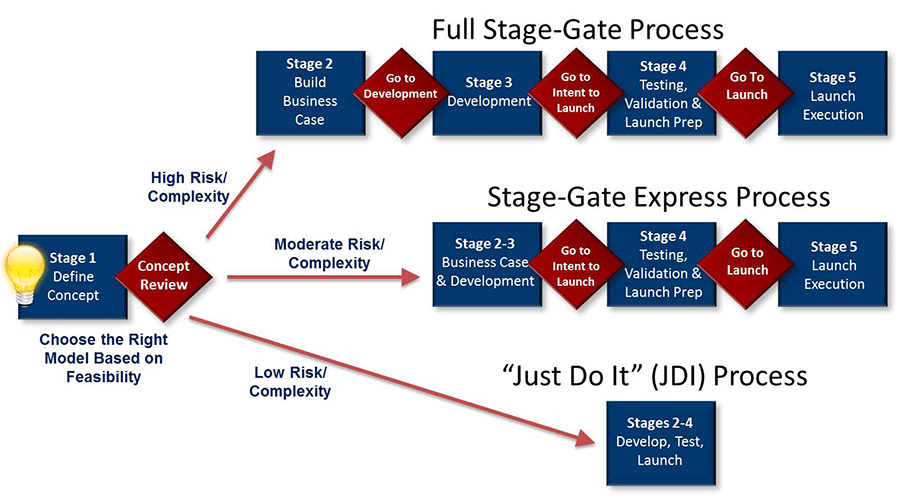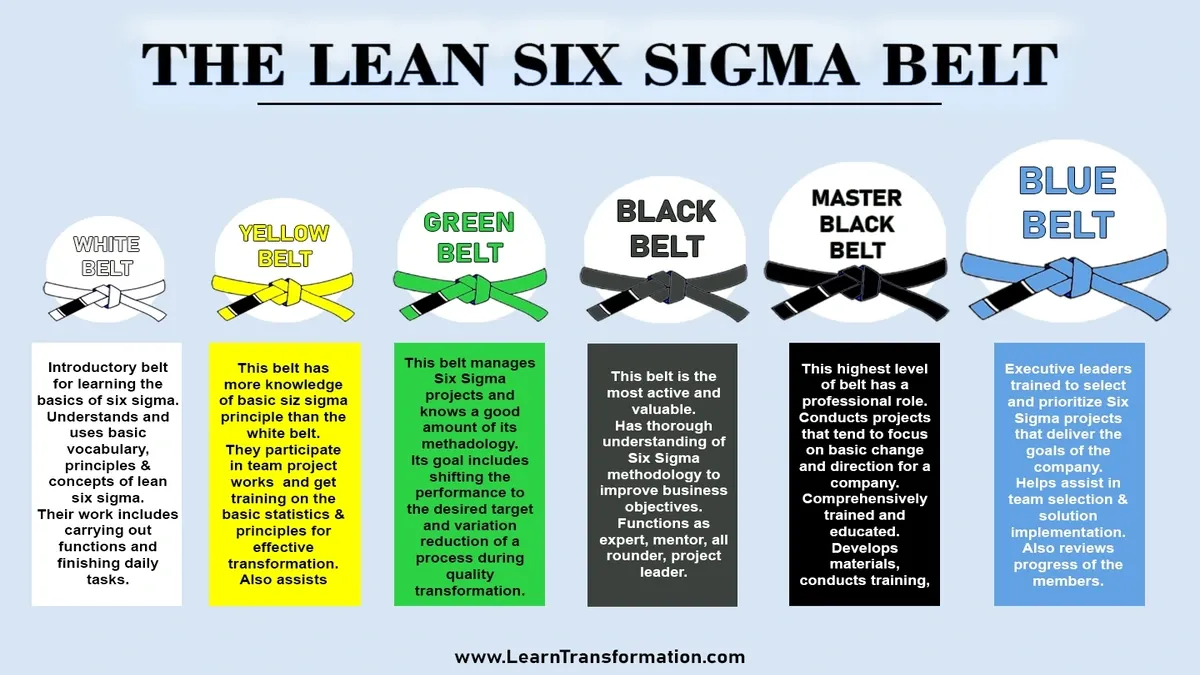What is a Quality Management Plan?
In the world of project management, success is often measured by the triumvirate of "time, cost, and quality."
Definition: Triumvirate = "any group or set of three."
While time and cost are meticulously addressed in the Project and Financial Plans, the third pillar of quality deserves no less attention. In this context, quality signifies the degree of conformity of the final deliverable to the customer's requirements. It is not merely a checkbox but an integral component that can make or break a project's outcome.
This is where the Quality Plan comes into play. It is not merely a document but a roadmap that guides the journey of ensuring the highest standards of deliverable quality. However, a Quality Plan doesn't stop at the product itself; it extends its purview to encompass the management processes that underpin quality, including change, risk, and issue management.
In this article, we will delve into the intricacies of a Quality Plan, why it's crucial, and how it's crafted.
To create a Quality Plan, the following steps are undertaken:
- Define quality in terms of this project
- Identify quality criteria and standards to achieve
- Describe the quality assurance and control techniques
- Define the processes required to achieve the quality targets specified.
When to use a Quality Plan
Before we dive into the specifics of a Quality Plan, let's discuss when it should be constructed. The Quality Plan is an integral part of the Project Planning phase, following the identification of the Project Plan, Resource Plan, and Financial Plan.
It serves as a beacon, summarising quality targets and management processes, which will be diligently followed during the Project Execution phase. Thus, it becomes a constant reference point, ensuring that deliverables and processes maintain the desired level of quality throughout the project's life cycle.
1.0 Deliverable Quality
The cornerstone of any project's success is the quality of its deliverables. Meeting time and cost objectives alone isn't enough; excellence in quality is paramount. To embark on this journey, we must first define what 'quality' means within the project's context. Quality, in this realm, can be succinctly put as "the level of conformance of each deliverable to the customer's requirements."
1.1 Definition
It all begins with a clear definition. What does 'quality' mean in your project?
For instance, "Quality is the level of conformance of each deliverable to the customer's requirements."
1.2 Quality Targets
Defining quality is just the start. For every deliverable, we need to establish specific quality targets—criteria and standards that must be met to align with the customer's requirements.
1.3 Quality Assurance Plan
Assuring customers of quality necessitates a comprehensive Quality Assurance (QA) plan. This entails preventive measures to eliminate deviations from the quality targets set. QA techniques encompass various strategies, including historical data analysis, requirements definition, standards establishment, staffing decisions, quality reviews, and robust change control processes.QA is often undertaken at a summarised level of the project and by an external project resource.
Types of techniques used to ‘assure’ the quality of deliverables include:
- Historical Data: Understanding other related projects (either currently under way or recently completed) and the quality issues encountered will enable the Quality Manager to plan in advance for potential quality issues that may arise on this project
- Requirements definition: A well-defined set of requirements will provide the team with a clear understanding of what they have to achieve to deliver customer satisfaction
- Standards Definition: By defining a specific set of quality criteria and standards, the project team will clearly understand the levels that must be achieved to deliver quality
- Skilled Staff: Using skilled staff will directly affect the quality of the deliverables produced. Appropriately skilled staff should have the knowledge, skills and experience required to undertake the tasks allocated in the Project Plan with minimal training to achieve the level of quality desired
- Quality Reviews: Independent reviews to assess the overall quality of each deliverable can provide the customer with confidence that the project is ‘on track’ and likely produce a deliverable that meets their requirements
- Change Control: Changes to scope often have an effect on the level of quality delivered. Through the identification of a clear change control process, only changes that are absolutely necessary will be adopted by the project for implementation.
Outline the QA plan to assure the customer that the quality targets will be met.
1.4 Quality Control Plan
In addition to assurance, Quality Control (QC) steps are vital. These are curative actions to rectify any deviations from the established quality targets. QC techniques include peer reviews, deliverable reviews, documentation reviews, and stage-gate reviews, all of which ensure deliverable quality is maintained.
Types of techniques used to ‘control’ the quality of the deliverables include:
- Peer Reviews: The process of requiring project team members to review each other's work is known to increase the level of quality of deliverables. It will also enable quality issues to be identified earlier in the Project Execution phase and therefore increase the likelihood of the quality issue's being resolved within the planned time allocation
- Deliverable Reviews: This process involves internal project staff undertaking formal planned reviews to ensure that the deliverable is built according to the specified design
- Documentation Reviews: Similar to deliverable reviews, this process involves the review of all management documentation at regular planned intervals in the project
- Stage-Gate Reviews: These are formal reviews at the end of each major project milestone to assess all activities and deliverables completed to date and gain approval from the Project Sponsor to continue to the next project phase. Stage Gate reviews can also be referred to as witness and hold points in a quality management process.
Describe the QC techniques to be implemented to control the quality of each deliverable on the project.
2.0 Process Quality
Quality isn't confined to deliverables alone; it permeates the project management processes as well. A multitude of processes must be executed diligently to ensure that the quality targets set earlier are achieved throughout the project's duration. Let's briefly outline these processes.
2.1 Time Management Process
Outline the Time Management Process by listing the following:
- The purpose of the process
- The steps involved in undertaking the process
- The responsibilities of each person involved in undertaking the process
- The document templates used during the process.
2.2 Cost Management Process
Outline the Cost Management Process by listing the following:
- The purpose of the process
- The steps involved in undertaking the process
- The responsibilities of each person involved in undertaking the process
- The document templates used during the process.
2.3 Quality Management Process
Outline the Quality Management Process by listing the following:
- The purpose of the process
- The steps involved in undertaking the process
- The responsibilities of each person involved in undertaking the process
- The document templates used during the process.
2.4 Change Management Process
Outline the Change Management Process by listing the following:
- The purpose of the process
- The steps involved in undertaking the process
- The responsibilities of each person involved in undertaking the process
- The document templates used during the process.
2.5 Risk Management Process
Outline the Risk Management Process by listing the following:
- The purpose of the process
- The steps involved in undertaking the process
- The responsibilities of each person involved in undertaking the process
- The document templates used during the process.
2.6 Issue Management Process
Outline the Issue Management Process by listing the following:
- The purpose of the process
- The steps involved in undertaking the process
- The responsibilities of each person involved in undertaking the process
- The document templates used during the process.
2.7 Procurement Management Process
Outline the Procurement Management Process by listing the following:
- The purpose of the process
- The steps involved in undertaking the process
- The responsibilities of each person involved in undertaking the process
- The document templates used during the process.
2.8 Acceptance Management Process
Outline the Acceptance Management Process by listing the following:
- The purpose of the process
- The steps involved in undertaking the process
- The responsibilities of each person involved in undertaking the process
- The document templates used during the process.
2.9 Communication Management Process
Outline the Communication Management Process by listing the following:
- The purpose of the process
- The steps involved in undertaking the process
- The responsibilities of each person involved in undertaking the process
- The document templates used during the process.
Conclusion
In the realm of project management, the pursuit of quality is a journey, not a destination. A well-crafted Quality Management Plan acts as the guiding star, illuminating the path toward delivering products that meet or exceed customer expectations. It also ensures that the management processes governing quality, risk, and change are executed with precision.
In this holistic approach to quality, we define what quality means, establish targets, employ assurance techniques, and implement control measures. This, combined with meticulous attention to various project management processes, lays the foundation for project success defined by "time, cost, and quality."
Key Takeaways
A well-crafted Quality Management Plan (QMP) is crucial for project success, as it ensures the highest standards of deliverable quality and encompasses management processes that underpin quality, including change, risk, and issue management.
Summary
- Quality in project management is measured alongside time, cost, and quality.
- The Quality Management Plan (QMP) focuses on ensuring the final deliverable aligns with customer requirements and also addresses management processes influencing quality.
- To create a QMP, one must define quality for the project, identify quality criteria and standards, describe quality assurance and control techniques, and define the processes needed to achieve quality targets.
- The QMP is constructed during the Project Planning phase, serving as a reference point throughout the project to maintain desired quality levels.
- Deliverable quality is a cornerstone of project success, and it requires clear definitions, specific quality targets, quality assurance plans, and quality control plans.
- Quality Assurance (QA) techniques include historical data analysis, well-defined requirements, standards definition, skilled staff, quality reviews, and change control.
- Quality Control (QC) techniques involve peer reviews, deliverable reviews, documentation reviews, and stage-gate reviews.
- Process quality is crucial, and various management processes, such as time, cost, quality, change, risk, issue, procurement, acceptance, and communication management, must be executed diligently.
- Each process should be outlined with its purpose, steps, responsibilities, and document templates.
- A well-crafted QMP defines quality, establishes targets, employs assurance and control techniques, and ensures that management processes governing quality are executed precisely. This approach leads to project success defined by "time, cost, and quality."
Further Reading













